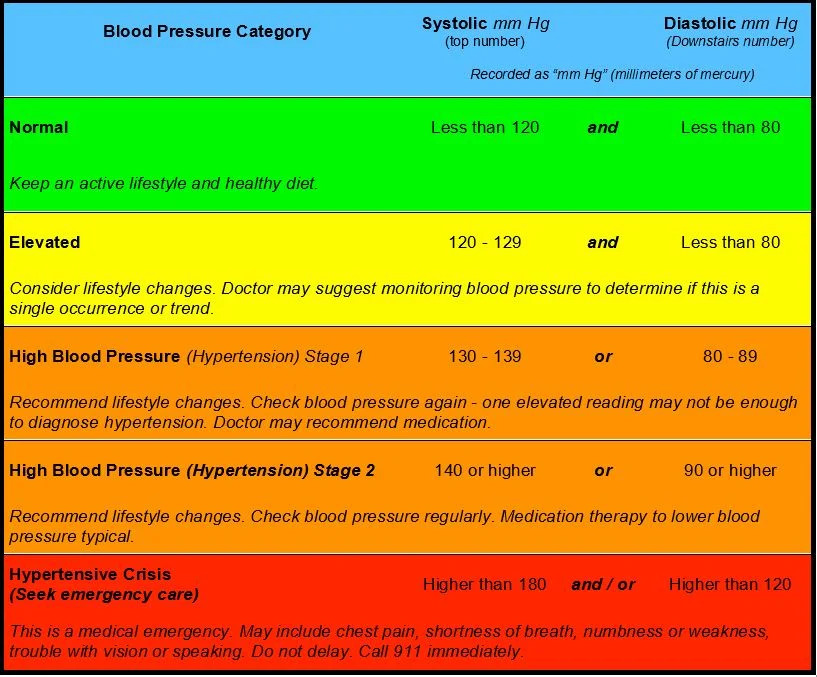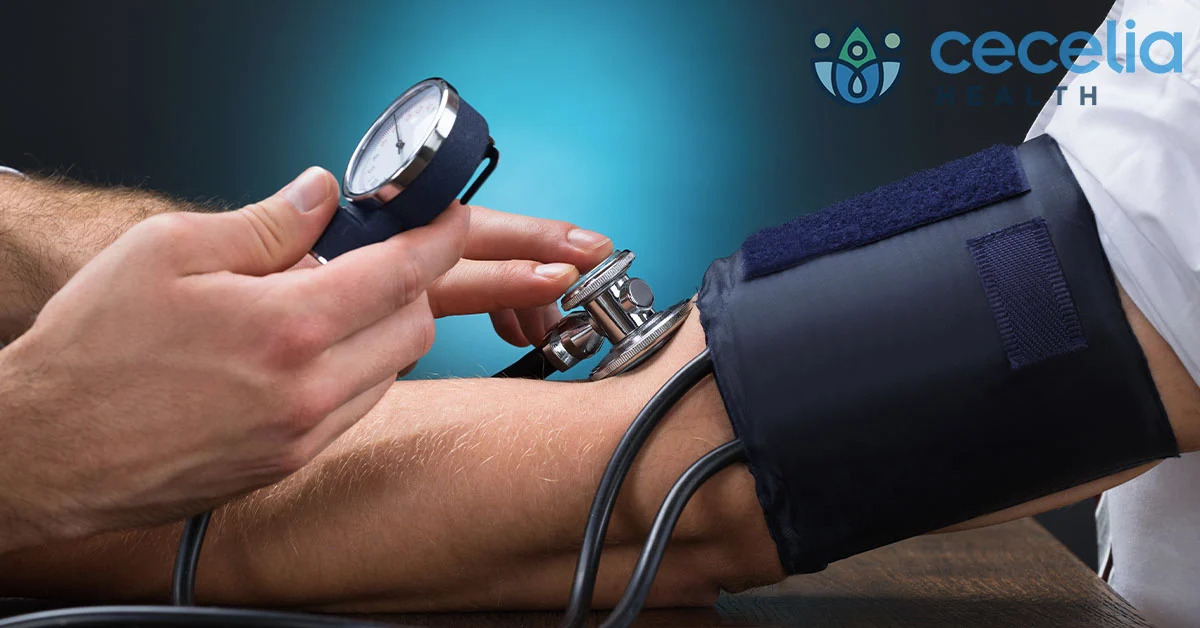Probably all of us have had a blood pressure check. Go to the doctor and they check your blood pressure. Go to the dentist and they check your blood pressure. Have an emergency and one of the first things they do is check your blood pressure. What exactly is blood pressure?
To explain blood pressure, let’s consider how the blood circulatory system works. We will begin at the right atria:
- Blood from the body returns to the heart by entering an upper right chamber call the right atria. The right atria pushes the blood into a larger chamber called the right ventricle.
- The right ventricle pushes the blood into the pulmonary arteries that lead the blood into a matrix over the lungs allowing the blood to unload carbon monoxide and pick up oxygen.
- The oxygen rich blood then travels back to the heart through the pulmonary veins to the left atria.
- The left atria pushes the blood into the left ventricle. The left ventricle will push the oxygen rich blood out to the coronary arteries and aorta where the blood will continue to the rest of the body.
- The blood moves through the heart and into the body by the contractions of the heart The heart muscles contract and squeeze the blood farther along the path through the heart.
- Heart contractions are controlled by electrical impulses normally originating at the top area of the heart. As the electrical impulse travels through the heart muscle, the muscle contracts creating a “squeezing” effect on the blood in the heart atria and ventricles, and pushes the blood forward. The electrical impulse normally travels through the heart muscle in a coordinated fashion from the atria to the ventricles allowing a coordinated push of blood along the circulatory pathway.
- Each heart beat is a repetition of the cyclic pattern; each heart beat is followed by a short “rest” as the heart relaxes after the contraction. The heart goes through this cycle about 60 – 100 times a minute, every minute of every day.
- Looking at the heart the right side smaller than the left side. This is normal. The right side only has to push the blood to the lungs – it’s a short trip and the lungs don’t normally put up a lot of resistance. Meanwhile the larger left ventricle has to push the blood farther – up to the brain, out to the tips of your fingers, down to the tips of your toes, and every where in between. This “push” generates pressure on all the blood vessels throughout the body. The skeletal muscles contract and relax as the body moves; this also puts pressure on the blood vessels and helps move blood around the body and back to the heart to begin the cycle over again. The pressure of moving blood around the body can be measured as “blood pressure”.
Why is blood pressure confusing? Sometimes blood pressure is confusing because it is represented by two numbers. A top number called “systolic” and a lower number called “diastolic”. People frequently get confused which is which and what they mean. Maybe this will help:
| Systolic | Larger number | Systolic pressure is the greatest pressure pushing against the sides of blood vessels during a heart contraction. |
| Diastolic
Remember “D” for “down” – it’s on the bottom floor / downstairs |
Lower number | Diastolic pressure is the least pressure pushing against the sides of the blood vessels while the heart is resting between heart beats. |
Additionally, people get confused about a “good” blood pressure and one that’s not. Accept that both numbers are important. Whether a blood pressure is “good” or not depends on how high the blood pressure numbers are, whether it’s only one number high or both, is the blood pressure elevation temporary or does it always seem to be a little high, and are there other health issues that make the blood pressure reading predictive of possible future health events. The following may help make sense out of blood pressure numbers.

A single elevated blood pressure may not lead to a diagnosis of high blood pressure or hypertension. Most healthcare providers will want more blood pressure readings to confirm a diagnosis of hypertension. Additionally, whether it’s the systolic elevated and / or the diastolic elevated determines how the healthcare provider proceeds with blood pressure management.
High blood pressure is common in persons living with diabetes and a major risk factor for atherosclerotic cardiovascular disease (ASCVD) and microvascular complications. For persons living with diabetes and hypertension with an elevated cardiovascular risk (e.g., an existing diagnosis of ASCVD), a blood pressure target of <130 / 80 mmHg is common.
Prevention or treatment of high blood pressure always includes making recommended lifestyle changes:
- Reducing sodium intake
- Getting more physical activity
- Weight loss if overweight
- Limiting alcohol
- Eating a healthy diet
- If you smoke, stop
With a diagnosis of high blood pressure, expect the doctor to prescribe one or more medications to lower or manage blood pressure. For the person living with type 2 diabetes and high blood pressure, treatment may include not only anti-hypertensive drugs but consideration of sodium-glucose cotransporter 2 inhibitors or glucagon-like peptide 1 receptor agonist for diabetes management as these two classes of drugs bring a cardiovascular disease benefit with them.
Good health demands a healthy cardiovascular and circulatory system. High blood pressure is twice as likely to be diagnosed in a person with diabetes than a person without diabetes. Untreated, high blood pressure can lead to heart disease, stroke, and kidney disease. For persons living with diabetes and high blood pressure, their risk of heart disease is four times higher that someone who doesn’t have either condition.
Talk to your healthcare provider about your blood pressure. It really is okay to ask if you should be concerned. If you have already been diagnosed with high blood pressure, ask your healthcare provider if there’s more you should be doing to lower your risk of heart disease, stroke, and kidney disease.
